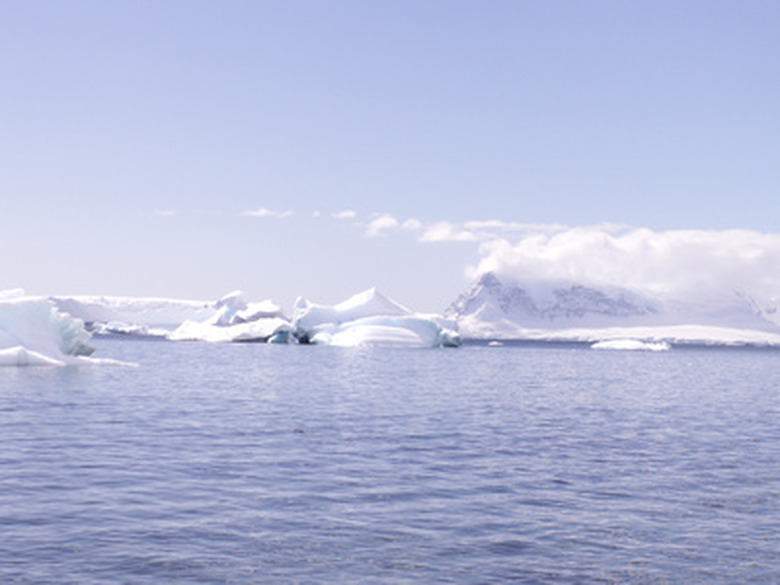Why Are Deep Water Currents Important?
Deep water ocean currents are formed when cold, nutrient-rich water sinks and flows away from the surface. There are sources of deep water currents in the northern and southern hemispheres. Deep water currents return nutrients to the surface by a process known as upwelling. Upwelling brings nutrients back into sunlight, where plankton can use the nutrients to provide energy that drives an ocean's ecosystem.
Ocean Layers
Ocean Layers
The oceans consist of layers of water with different qualities. The energy for ecosystems is generated by plankton, mostly in the upper layer known as the photic zone (the region where light penetrates the ocean). Plankton use light and nutrients in the water to generate food energy. Larger organisms feed on the plankton, providing the basis for a food chain or ecosystem that includes invertebrates like shrimp and krill, larger fish, sharks, marine birds and marine mammals. Deeper layers of oceans are colder and dead organisms provide nutrients that fall out of the photic zone into these deeper layers.
Sources
Sources
Deep water currents are formed when surface waters are cooled, become more dense and sink below the surface. Major areas where this occurs are around Antarctica and in the North Atlantic. Water becomes more dense when it has a higher salt content or becomes colder. Both of these processes occur at deep water current sources through a combination of cooling and evaporation.
Nutrient Cycle
Nutrient Cycle
Plankton require sunlight and nutrients to produce food energy. Plankton produce most of the food energy in the uppermost layers of the ocean. As this food energy is consumed by larger organisms in the food chain, nutrients are lost as dead organic matter sinks into deeper water. Some of the nutrients are lost forever in ocean sediments, but some of the nutrients are recycled when deep water currents reach surface regions.
Upwelling
Upwelling
Upwelling is a process that causes deep, nutrient-rich waters to rise to the surface where plankton can use the nutrients to produce new food energy. Upwelling can be caused by wind and weather that pushes warm surface waters away from land, causing deeper, nutrient-rich waters to come to the surface. This allows plankton to use the nutrients and the sun's energy to produce new food energy.
Temperature
Temperature
Deep water currents redistribute cold water from the northern and southern hemispheres back to more temperate regions on Earth. These currents, in combination with warmer surface currents, are sometimes likened to a conveyor belt that moves warm surface waters to the poles and redistributes cold water back toward the Equator. This has the effect of moderating global temperatures.
Cite This Article
MLA
Contributor, . "Why Are Deep Water Currents Important?" sciencing.com, https://www.sciencing.com/deep-water-currents-important-6388674/. 22 November 2019.
APA
Contributor, . (2019, November 22). Why Are Deep Water Currents Important?. sciencing.com. Retrieved from https://www.sciencing.com/deep-water-currents-important-6388674/
Chicago
Contributor, . Why Are Deep Water Currents Important? last modified March 24, 2022. https://www.sciencing.com/deep-water-currents-important-6388674/


